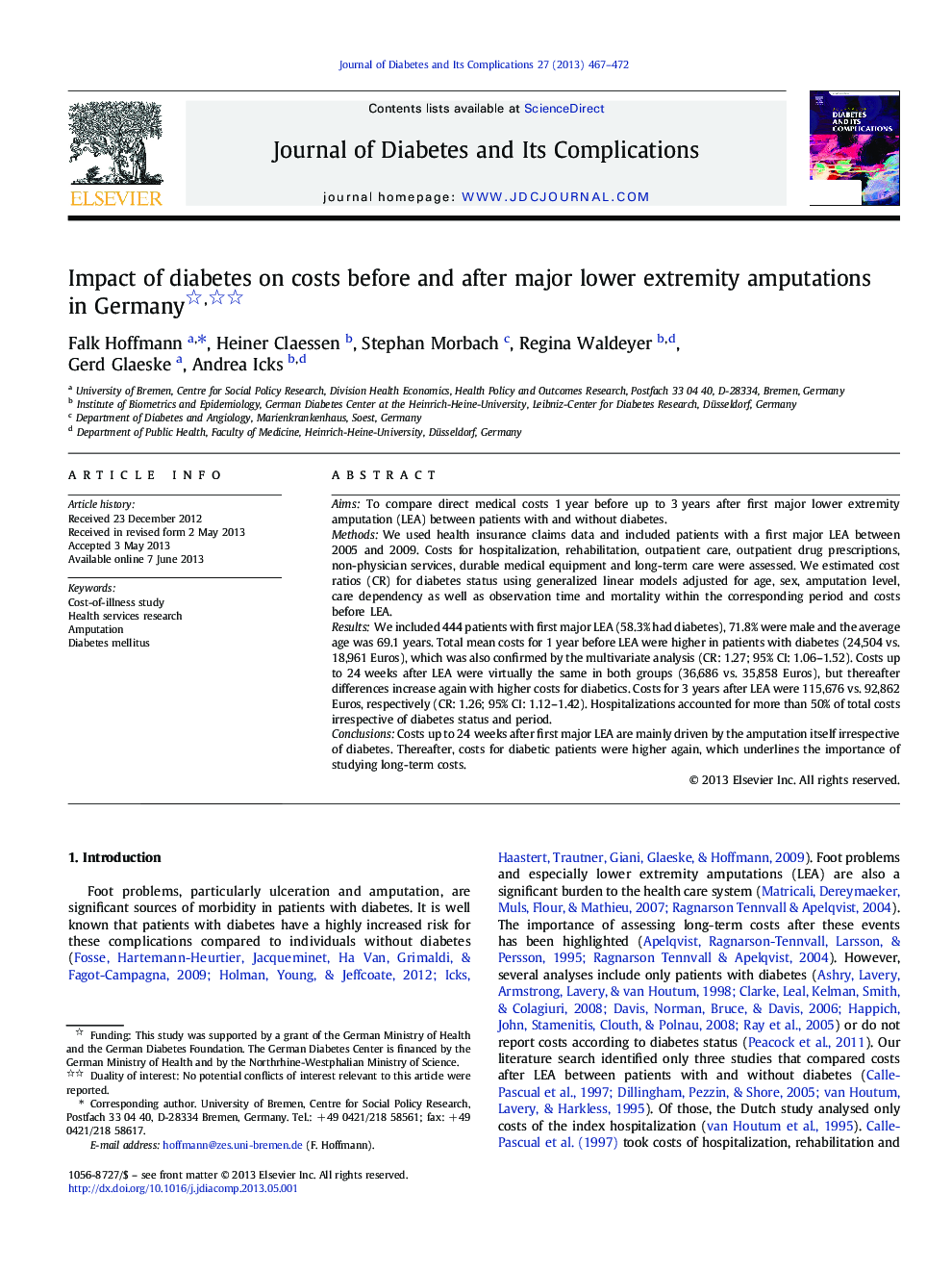| Article ID | Journal | Published Year | Pages | File Type |
|---|---|---|---|---|
| 5902865 | Journal of Diabetes and its Complications | 2013 | 6 Pages |
AimsTo compare direct medical costs 1Â year before up to 3Â years after first major lower extremity amputation (LEA) between patients with and without diabetes.MethodsWe used health insurance claims data and included patients with a first major LEA between 2005 and 2009. Costs for hospitalization, rehabilitation, outpatient care, outpatient drug prescriptions, non-physician services, durable medical equipment and long-term care were assessed. We estimated cost ratios (CR) for diabetes status using generalized linear models adjusted for age, sex, amputation level, care dependency as well as observation time and mortality within the corresponding period and costs before LEA.ResultsWe included 444 patients with first major LEA (58.3% had diabetes), 71.8% were male and the average age was 69.1Â years. Total mean costs for 1Â year before LEA were higher in patients with diabetes (24,504 vs. 18,961 Euros), which was also confirmed by the multivariate analysis (CR: 1.27; 95% CI: 1.06-1.52). Costs up to 24Â weeks after LEA were virtually the same in both groups (36,686 vs. 35,858 Euros), but thereafter differences increase again with higher costs for diabetics. Costs for 3Â years after LEA were 115,676 vs. 92,862 Euros, respectively (CR: 1.26; 95% CI: 1.12-1.42). Hospitalizations accounted for more than 50% of total costs irrespective of diabetes status and period.ConclusionsCosts up to 24Â weeks after first major LEA are mainly driven by the amputation itself irrespective of diabetes. Thereafter, costs for diabetic patients were higher again, which underlines the importance of studying long-term costs.
